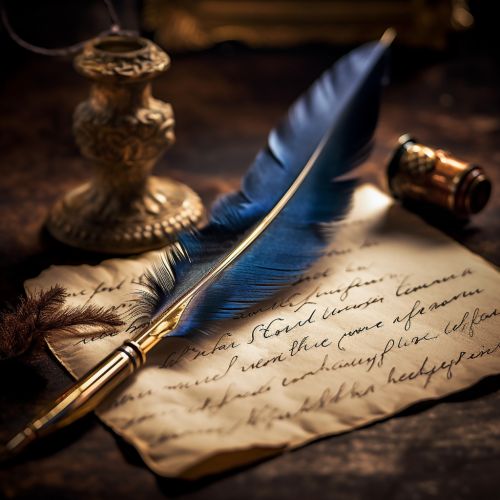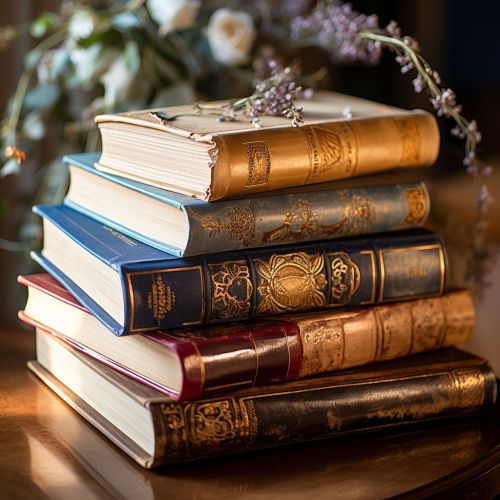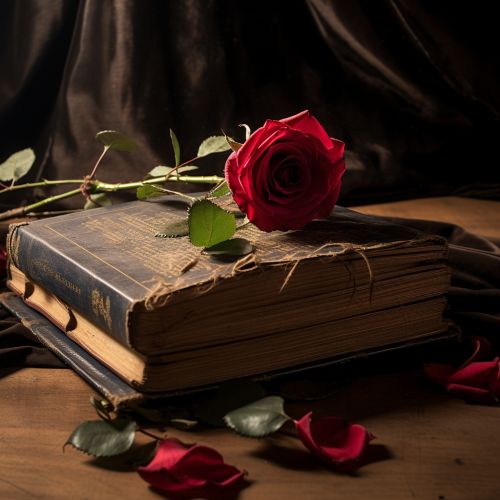Lyric poetry
Overview
Lyric poetry is a genre of poetry that expresses personal and emotional feelings. In the ancient world, lyric poems were sung to the accompaniment of a lyre. Lyric poetry is unique among genres of poetry due to its potential to take on many forms. While it can be classified as a genre, lyric poetry has been seen in many periods and cultures, and the definition has evolved over time. Lyric poetry can be distinguished from narrative and dramatic forms of poetry by the way it presents an immediate and emotional impression of the poet's state of mind, rather than recounting a story or presenting a dramatic situation[^1^].


History
Lyric poetry originated in the ancient world, with the Greeks and Romans producing many notable examples. The term "lyric" comes from the Greek word "lyrikos," meaning "singing to the lyre," a musical instrument similar to a small harp[^2^]. The Greeks, and later the Romans, would often perform lyric poems to the accompaniment of the lyre, hence the name. Some of the most famous ancient lyric poets include Sappho, Pindar, and Anacreon in Greece, and Horace and Catullus in Rome[^3^].


During the Middle Ages, lyric poetry continued to be produced, with the troubadours of Provence and the Minnesänger of Germany being particularly notable. These poets, often of noble birth, would compose and perform songs dealing with themes of love and chivalry[^4^].
In the Renaissance, lyric poetry became increasingly popular, with poets such as Petrarch in Italy and Pierre de Ronsard in France producing many fine examples. The sonnet, a form of lyric poetry with a strict structure of 14 lines, became particularly popular during this period[^5^].
The Romantic period saw a flourishing of lyric poetry in the English-speaking world, with poets such as William Wordsworth, Samuel Taylor Coleridge, and John Keats using the form to explore their feelings and perceptions of the world[^6^].


In the 20th century, lyric poetry continued to be a popular form, with poets such as W. H. Auden, Dylan Thomas, and Sylvia Plath using it to express their personal experiences and emotions[^7^].
Forms of Lyric Poetry
Lyric poetry can take on many forms. Some of the most common forms include the sonnet, the ode, the elegy, and the haiku[^8^].


Sonnet
The sonnet is a 14-line poem with a specific rhyme scheme. The English, or Shakespearean, sonnet is divided into three quatrains and a final rhymed couplet. The Italian, or Petrarchan, sonnet is divided into an octave and a sestet[^9^].
Ode
The ode is a formal, often ceremonious, poem that addresses and often celebrates a person, place, thing, or idea. Its stanza forms vary[^10^].
Elegy
The elegy is a mournful, melancholic or plaintive poem, especially a funeral song or a lament for the dead[^11^].
Haiku
The haiku is a form of Japanese poetry consisting of 17 syllables in three lines of 5, 7, and 5, traditionally evoking images of the natural world[^12^].
Themes in Lyric Poetry
Lyric poetry often explores themes of love, beauty, death, and the transience of life. These themes are often explored through the use of vivid and emotive language, with the poet's personal feelings and perceptions playing a central role[^13^].


Lyric Poetry Today
Today, lyric poetry continues to be a popular form of expression, with many contemporary poets using the form to explore their personal experiences and emotions. The rise of spoken word and slam poetry has also seen a resurgence in the popularity of lyric poetry, with many poets using the form to address social and political issues[^14^].
See Also
References
[^1^]: Abrams, M. H., and Geoffrey Galt Harpham. "Lyric." A Glossary of Literary Terms. 10th ed. Boston: Wadsworth, 2012. Print. [^2^]: "Lyric." The Oxford Dictionary of Literary Terms. Oxford University Press, 2008. Web. [^3^]: Greene, Roland, et al., editors. "Lyric." The Princeton Encyclopedia of Poetry and Poetics. 4th ed. Princeton University Press, 2012. Print. [^4^]: "Troubadour." The New Princeton Encyclopedia of Poetry and Poetics. Princeton University Press, 1993. Print. [^5^]: "Renaissance." The Oxford Dictionary of Literary Terms. Oxford University Press, 2008. Web. [^6^]: "Romanticism." The Oxford Dictionary of Literary Terms. Oxford University Press, 2008. Web. [^7^]: "Modernism." The Oxford Dictionary of Literary Terms. Oxford University Press, 2008. Web. [^8^]: "Forms of Lyric." The New Princeton Encyclopedia of Poetry and Poetics. Princeton University Press, 1993. Print. [^9^]: "Sonnet." The Oxford Dictionary of Literary Terms. Oxford University Press, 2008. Web. [^10^]: "Ode." The Oxford Dictionary of Literary Terms. Oxford University Press, 2008. Web. [^11^]: "Elegy." The Oxford Dictionary of Literary Terms. Oxford University Press, 2008. Web. [^12^]: "Haiku." The Oxford Dictionary of Literary Terms. Oxford University Press, 2008. Web. [^13^]: "Themes in Lyric Poetry." The New Princeton Encyclopedia of Poetry and Poetics. Princeton University Press, 1993. Print. [^14^]: "Contemporary Poetry." The Oxford Dictionary of Literary Terms. Oxford University Press, 2008. Web.
